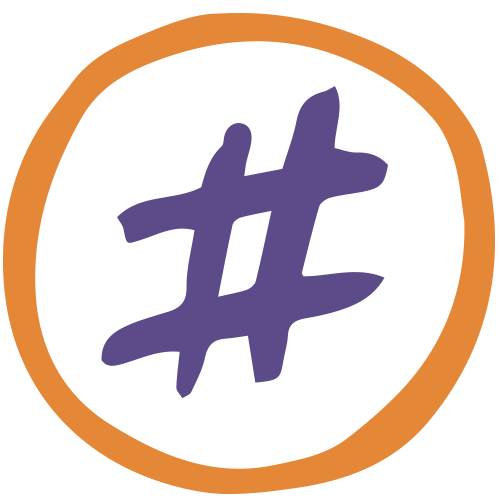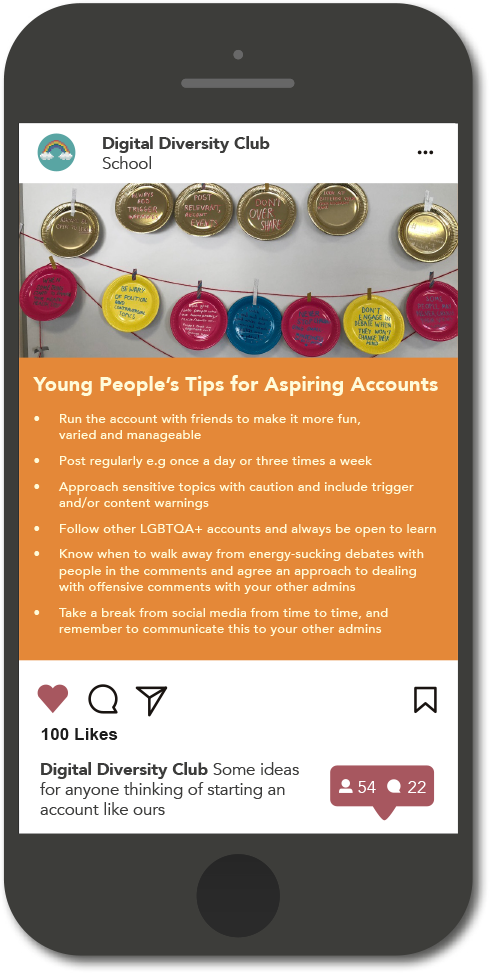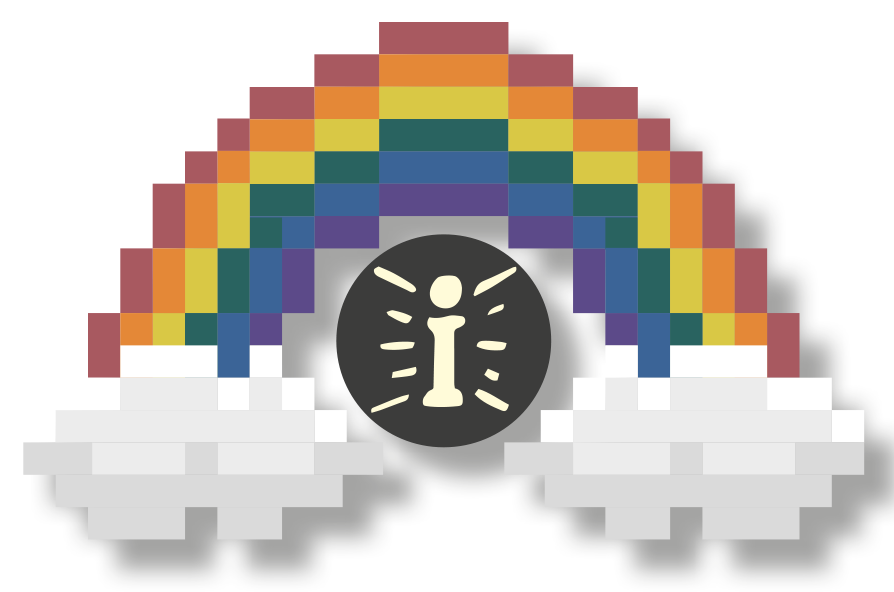Our School Diversity Club & Diversity Social Media Account
We are a Diversity Club who runs weekly lunchtime meetings at school, supported by three teachers and our head teacher. Providing a “safe space” for students in our school is the most important priority of our group. We also promote diversity and equality across the school, we have run assemblies, and we recently made a school ‘diversity’ video, to promote body, gender and sexuality positivity and acceptance, which was shown around school in form-tutor groups. Some students have also represented our school on these issues participating in education conferences and events.
Four students in our group also operate a collective ‘diversity’ Instagram account that promotes positive and supportive messages about LGBTQA+ people. This account is run by us students as private individuals, but our school informally supports us. As students who run the account we appreciate our school doesn’t try to control it. We discuss the content we share frequently at our school’s Diversity Club and think about the learning and education that happens on the account around gender and sexuality. We know that we can also discuss with the teachers who facilitate our Diversity Club how we may tackle any sensitive issues about gender and sexuality that may come up online.
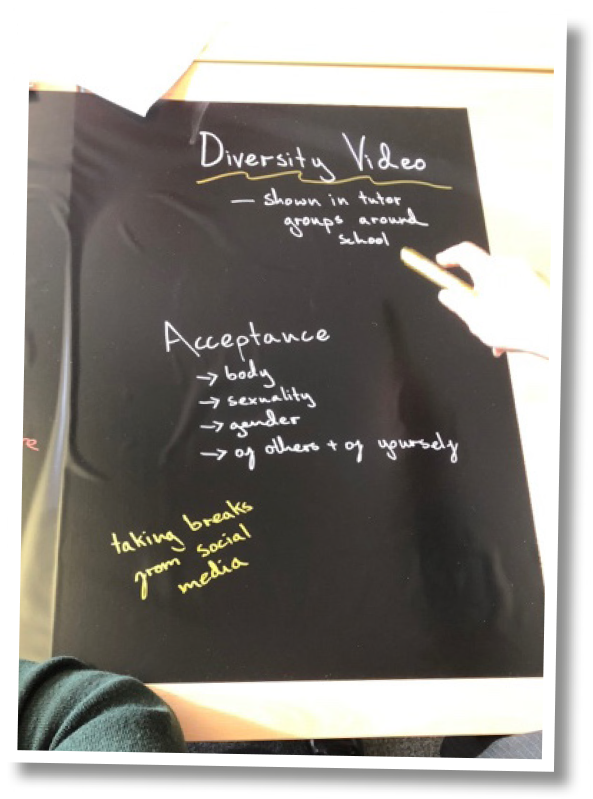
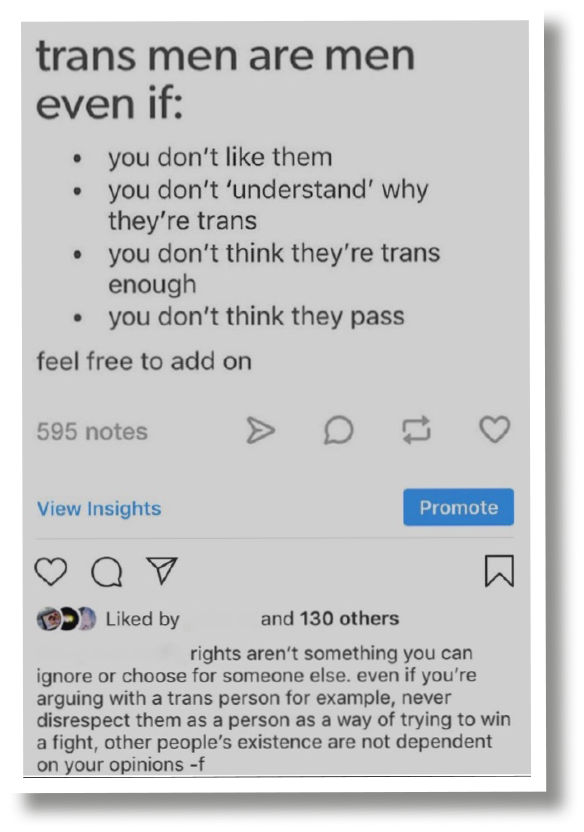
Going Viral with Instagram
Instagram is a photo and video-sharing social networking site which allows visual content to be shared and organised with various hashtags. After seeing other diversity accounts on Instagram that promote positive messages about LGBTQA+ identity we decided that it would be fun to create our own account. We started making affirming posts that celebrated diverse relationships and challenged homophobia, transphobia, heterosexism and gender norms. We use content that we find on Tumblr, Twitter and Instagram and we repost it with positive captions and messages.
Working on our Instagram account allows us to play an active role in our community, and have a voice on the things that we and other LGBTQA+ people worry about, from bullying, body dissatisfaction, peer pressure to mental health concerns. In addition to the original four students, there are now seven of us who run the account and we have over 5,000 followers!
Going viral with our Instagram account is a fun multi-media way to use image, video and text to rapidly spread affirming messages about LGBTQA+ matters from person to person. Our content disrupts Instagram’s familiar visual displays of stylised bodies with humorous, hopeful and healing messages for equality. Our LGBTQA+ positivity radiates outward effecting change in our own school communities and beyond.
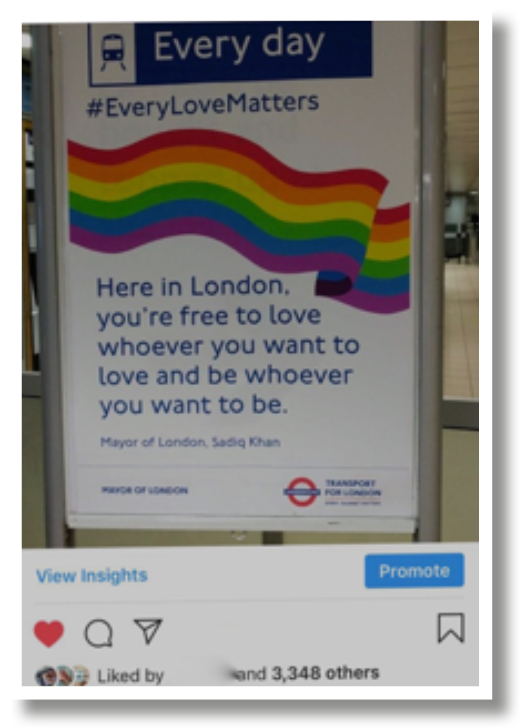
Travelling offline
We were nervous at first about what would happen if other people from school followed us, but over time we found more and more of our peers started to engage with and post supportive comments on the account. Many of our peers go to the account to educate themselves about LGBTQA+ matters and it has even been instrumental in attracting more students to our school Diversity Club. We have even been invited to contribute to a Gender Equality conference on behalf of our Diversity Club, which gave us a chance to share what we have learnt from social media.
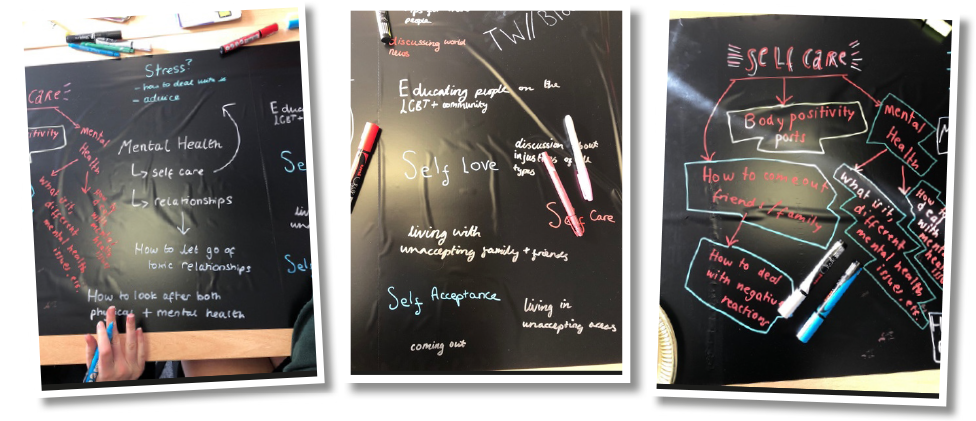
Staying safe on social media
Before you begin an awareness raising social media account, it’s useful to think about all the people you can turn to and rely on if you need extra support. We often turn to a parent or teacher when we need a little more guidance. Our top tips include don’t engage when posters on your account refuse to listen and are spreading hate of other groups of people (e.g racism, sexism, homophobia). You may want to delete posts that spread hate. It’s important to realise that it is not going to be possible to change the minds of all people. Our focus is on spreading positive messages for people that appreciate our diversity account and discuss issues in a constructive way.
![]()
Trigger Warning
A small gesture of solidarity at the start of a piece of writing, video, or picture alerting your followers to the fact that it contains potentially distressing material.
![]()






